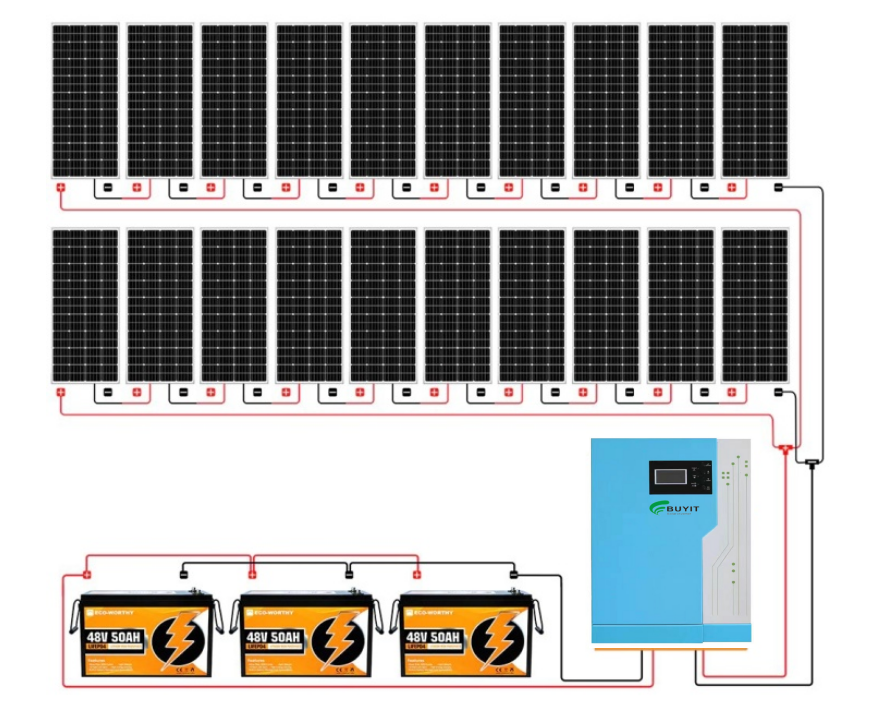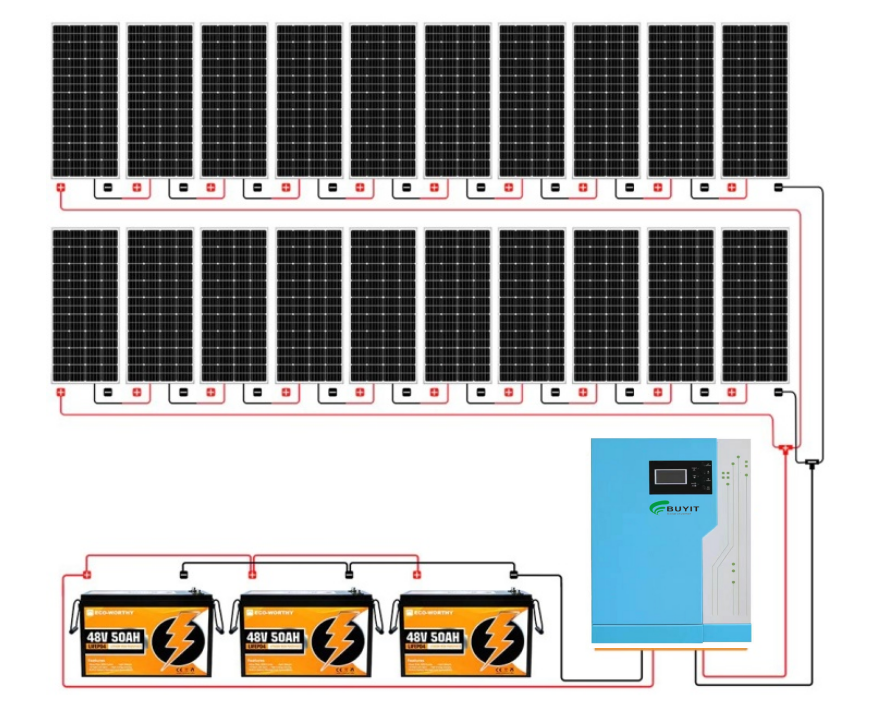
What are the components of photovoltaic power generation system?
A solar photovoltaic system typically consists of six separate components: a solar photovoltaic array, charge controller, battery pack, inverter, electricity meter, and grid. The proper installation of all these components determines the efficiency of the solar panel. Since most inverters now have their own charging controller, the connection diagram is changed from Figure 1 to Figure 2.


In the last episode, we explained the inverter. The inverter can be said to be the heart of the system and determines the type of the system.
Photovoltaic systems are mainly divided into grid-connected systems, off-grid systems and hybrid systems according to functions; grid-connected systems: photovoltaic panels + grid-connected inverters + meters to the grid; photovoltaic panels can generate electricity for their own use, and excess electricity can be sold to the grid. When the power generation is not enough, the grid supplies power together;
Off-grid system: photovoltaic panel + off-grid inverter + battery + grid; photovoltaic power generation can be used by itself and stored in the battery. If the battery and photovoltaic power generation are not enough, the grid will supply power to the household load together;
Hybrid system: photovoltaic panel + hybrid inverter + battery + grid; photovoltaic power generation can be used by itself, stored in the battery, and excess power can be sold to the grid, that is, grid-connected system + off-grid system, suitable for areas lacking electricity.
Component 1: Solar Photovoltaic Array
A solar photovoltaic array consists of many electrically connected solar photovoltaic panels. The solar photovoltaic array generates direct current through sunlight. The photovoltaic panels are linked to the controller after being connected in series and in parallel. Photovoltaic systems are available in many different designs depending on requirements, no matter how large or small the installation surface is. The string mode is as shown in the figure below, the actual installation depends on the parameters of the inverter.

Component 2: Inverter with charge controller
A charge controller regulates the direct current from the solar panels to ensure the battery is not overcharged. The charge controller measures whether the battery is fully charged and can stop the flow of current to prevent damage to the battery. Since not every photovoltaic system has a solar array, it is not always necessary to include a charge controller in your system. In other words, if you have a battery pack, you only need a charge controller. A solar inverter is a critical part of any solar photovoltaic system as it converts electricity from DC to AC. This is necessary because you need AC power to power your home appliances. For details, please refer to Episode 2 for a detailed explanation; the following are common inverter brands

Component 3: Battery Pack
The battery pack ensures that none of your unused energy goes to waste, as it stores the energy generated by the photovoltaic array and does not immediately dissipate it. For example, it can power your home at night or in cloudy weather with little sunlight. Including a battery pack with your PV system is optional, but it can double the amount of solar energy you can use. The size of the battery pack can be configured according to actual needs, refer to Figure 3 (the inverter is connected to the battery pack).

shenzhenbuyit
w
Component 4: Utility Table
Regardless of your solar PV system, your home has an electric meter that measures electricity usage. The electricity meter connects to the photovoltaic system and measures how much electricity you use in your home.
Part 5: Grid
If your home is connected to the grid, it means that during periods when the photovoltaic system cannot meet your energy needs, you will be able to power your home from the grid if necessary.
Solar PV system cost:
Since the cost of a solar PV system will vary based on many different factors, there is no single price, but rather a variety of options and costs. The cost of installing solar panels depends largely on the size, pitch and condition of your roof, and the amount of electricity your home needs. The above is a brief introduction of the photovoltaic system~ If it is helpful to you, one of your three links – like, forward, bookmark, is the greatest support for us~
You can follow our facebook page: https://www.facebook.com/profile.php?id=100063759684601
Or you can add our what’s app: 008613808405352
24 hours service for you 😊